
Which Plant Grows Best in Virginia? ShrubHub's Top Picks
Published: 29/05/2025 | Updated: 29/05/2025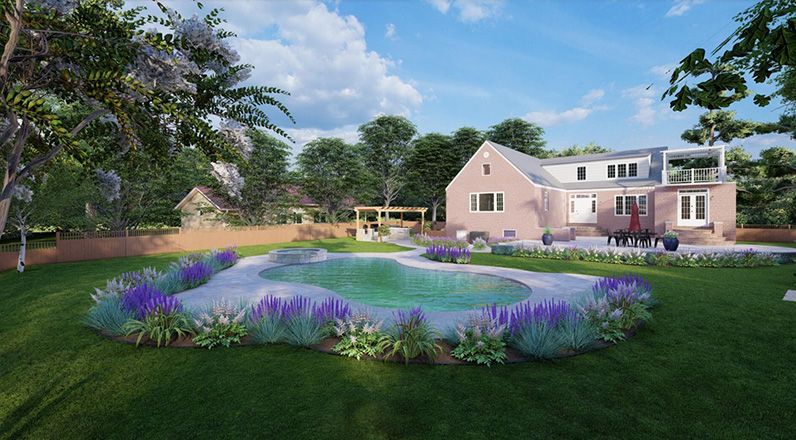
Key Highlights
-
Native plant species play a crucial role in sustaining Virginia’s ecosystems, supporting biodiversity and wildlife habitats.


-
Virginia’s climate and soil diversity influence which plant species thrive, depending on factors like growing season and moisture.
-
The blog highlights trees, shrubs, flowers, and grasses ideal for Virginia landscaping, including both native species and garden design ideas.
-
The importance of combating invasive plant species and erosion through strategic planting is underscored.
-
Tips for accommodating local climate characteristics such as full sun and moist conditions are covered.
Introduction
Virginia has a great mix of native plant species. These plants are used to the state's different landscapes, from the hills of the Piedmont to the Coastal Plain. If you add native species to your garden, you help keep things in balance. Plus, you get a garden that looks nice and fits the land. You might want garden design ideas with butterfly weed. Or maybe you want lots of green plants that like moist conditions. This guide from ShrubHub shows you the best plants for the area. Let's find the right native companions for your next garden!
Understanding Virginia’s Climate and Soil Types
Virginia has seven main ecological regions. These include the Southeast Coastal Plain and the Appalachian Plateau. Each one has its own conditions for plants to grow. These areas are different in how high they are, what the pH level is, and their water systems. This shapes the local ecosystems and helps both native wildlife and plant species to do well. Some things, like how much rain there is during the year, how often the temperature changes, and how deep the soil is, can all change how well things grow in a garden.
The soil type in the region can be very different. Some places, like the Coastal Plain, have sandy soil. The Piedmont has soil with more nutrients. Moist conditions are common in some areas, but in other places, the soil often gets washed away. It is important to know this when you pick what plant species to grow. This will help you choose plants that are right for each space.
The Impact of Climate on Plant Growth
Virginia has a long growing season. This is good for plants with flowers and food crops. Native species like mountain mint and wild bergamot grow well in this area. These plants bring life to yards when early spring flowers fade and summer and fall colors take over.
It’s important to pick plants that do well with a lot of sunlight. This helps in places where there is full sun most of the time. Good choices are flowers that help the monarch butterfly and strong grasses that grow well with lots of sun. Planting in early spring is smart because the soil is better and the roots will set in before the hot summer.
Moving between warm summers and mild winters in Virginia means you need to use ideas that match the weather. Choose drought-tolerant plants or ones that like more water, based on your yard. Every plant you pick helps save the homes of wildlife. Because the growing season is long, gardeners have time to make places full of the state’s beautiful native species.
Soil Composition and Its Role in Supporting Plant Life
The kinds of soils in Virginia be different across the state. This changes what plants grow best in each place. In parts of Virginia that have a problem with soil erosion, people often plant deep-rooted native grasses, like switchgrass, to help hold the soil in place. These plants help keep the land strong and also help keep nature in balance.
The coastal plain has moist conditions. This is a good area for plants that grow well in wet places, such as Joe-Pye weed. These kinds of native plants help the environment because they protect the soil. Some native shrubs that can handle dry weather grow in sandy places, where the soil does not keep water for a long time.
It is important to take care of habitat loss by planting native plants in the right spot. Plants that are used to the local soil are good for wildlife. They give food and shelter to animals such as monarch butterflies and small mammals. Picking plants from the local area will not just help stop soil erosion. It will also help protect the land from invasive species and make Virginia’s ecosystems stronger.
Best Trees for Virginia Landscapes
The native trees found in the Commonwealth of Virginia help turn private gardens and public places into homes for wildlife. The October Glory Red Maple is one of these trees. It brings bright colors to your yard in different seasons. This tree also brings in birds and grows well in local conditions.
There are also strong types of trees, like the Swamp White Oak. It gives shade and helps animals find shelter. These trees do well in many soil types found in the Commonwealth of Virginia, like clay and sand. This means gardeners have many choices for different places in their yard. These native trees help make the area full of life, supporting both plant and animal life all across the state.
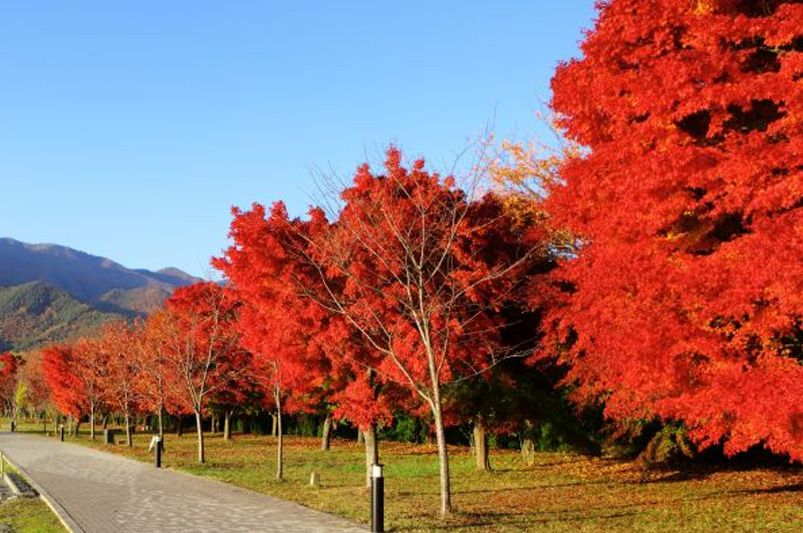
October Glory Red Maple Tree
October Glory Red Maple is a well-liked native tree in the United States. Many people enjoy it for its bright red leaves in the fall. In Virginia, you often see this tree because it can live in many types of land, from the hills to the coastal plain. People often use it in garden design ideas because it grows at a steady pace and adds strong colors to landscapes.
This tree grows best when it gets plenty of full sun and is in moist conditions. It grows tall and wide, so it can give lots of good shade, especially in backyards or other places where people live. Native wildlife, like birds, also like this tree. They are attracted to its fruit called samaras.
Many homeowners plant October Glory for both reforestation and decoration in their gardens. It shows how people who care about the land want to bring sustainable planting to Virginia yards. This native tree will give lasting color and shade for many years.
Swamp White Oak Tree
The Swamp White Oak is one of the key trees in the Commonwealth of Virginia. It plays a big part in helping native wildlife. Its acorns give food to many native species and help life in the state stay strong. This tree also does well in dry times once it gets established, so it works great in gardens that don't get much water.
This oak got its name because it can grow in wet areas, too. You can plant it near water or out in dry land. The Swamp White Oak helps stop soil erosion and keeps the ground steady. It does well with some care, as long as you put it in a spot with full sun.
There are many native species that rely on this tree. It brings food and keeps animals safe. It also makes a bond between people in Virginia and the world around them. This tree is tough and fits in both parks and private lands. Saving trees like this helps keep the land special.
Ideal Shrubs for Virginia Gardens
Virginia’s gardens get a lot from native shrubs. These plants help bring both beauty and useful roles to your yard. Arrowwood Viburnum has yellow flowers that bring in butterflies. It also helps the soil stay strong. This shrub needs little care and works well in places where there is erosion.
Baby Gem Boxwood stands out with its neat look. It is a good pick if you want some new garden design ideas. This shrub stays low and can handle changes in sunlight. It mixes style with use in the garden. When you grow these shrubs, your garden helps pollinators. You also add to the local plant mix with some good choices.
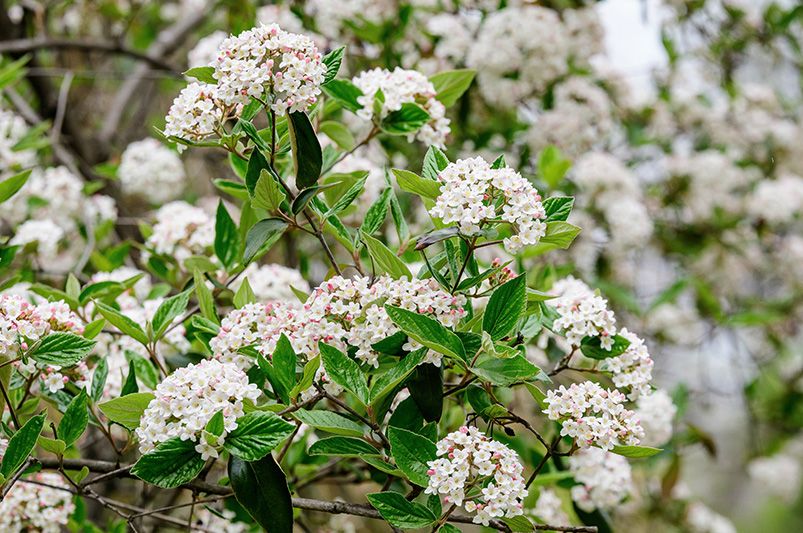
Arrowwood Viburnum
Arrowwood Viburnum is a good plant to add to your yard. It looks nice and grows well through the year. You will see bunches of yellow flowers on it. These flowers attract butterflies. Many people like to grow it with butterfly weed, and that is great for conservation gardens.
This plant is native to Virginia. Arrowwood Viburnum does well in areas where the ground is worn away by water or other things. Its strong roots help hold the soil in place, so it keeps the dirt from washing away. This helps stop habitat loss for animals that need native shrubs to live. The plant also likes some sunlight. That makes the yellow flowers look even better, which helps attract more bugs that help pollinate.
If you own a home, you will like how easy this plant is to care for. Arrowwood Viburnum grows in lots of different soils and does not need much special care. It can also handle rainy or dry weather because it is tough. When you pick this shrub, you help your garden and also help the plants and animals in Virginia, supporting biodiversity and growing spots for butterflies.
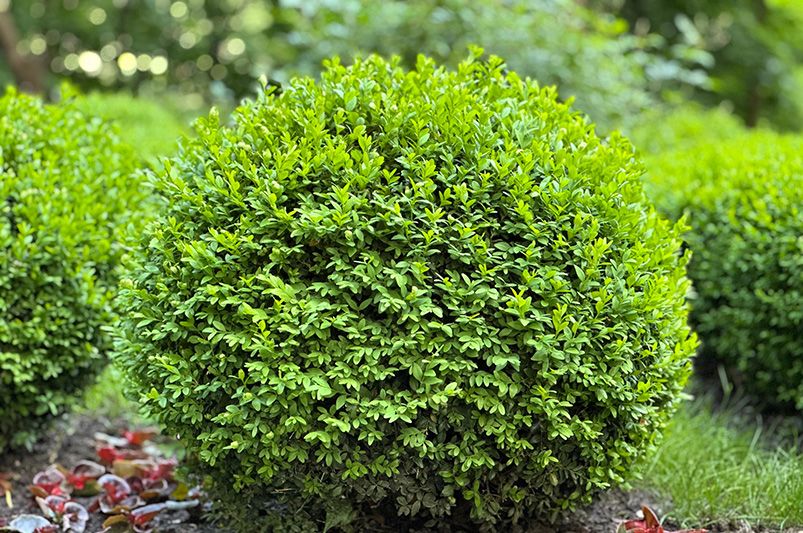
Baby Gem Boxwood
If you want a neat look for your yard, Baby Gem Boxwood is a great choice. This plant is very useful and fits many garden design ideas. It has a small, round shape. This makes it good for making neat garden borders or for a boxwood garden. The plant does well in some sun and keeps its deep green leaves all year.
People who are full members of local programs like how easy it is to use Baby Gem Boxwood. Also, you do not have to do much hard pruning or spend much time caring for it. You only need to pay the yearly membership to join the group.
Planting Baby Gem Boxwood in the mild weather of Virginia can help save local plant life and bring life back to open land. No matter if your garden design ideas are for saving animal homes or just for looks, this plant is a good pick. It works for those who want a native plant in the garden, for the front yard, or larger landscaping projects.
Top Flowers That Thrive in Virginia
Virginia’s blooming seasons show off many native flowers that grow well in different areas. The Woods Pink Aster adds bright purple flowers to gardens in the fall. These flowers help bring in pollinators like monarch butterflies. It will do well in many types of light.
Snowflake Creeping Phlox covers the ground with its soft look and helps protect your garden from invasive species. Its tubular flowers come back year after year. They grow well in both shade and sun. If you use these flowers, you can get bright colors in your garden all year.
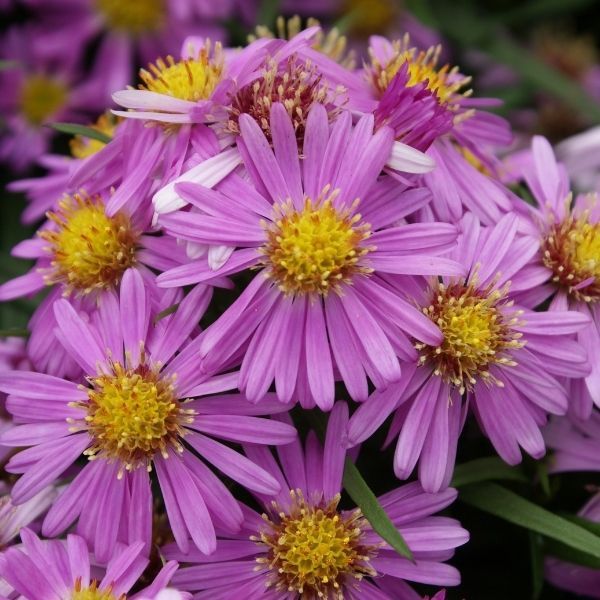
Woods Pink Aster
Woods Pink Aster brings bright purple flowers to gardens in Virginia. This plant helps people feel relaxed while adding to the look of natural spaces. People know Woods Pink Aster for supporting monarch butterflies. It plays a big part in helping pollinators in parks and community gardens.
Woods Pink Aster looks a lot like the butterfly bush during late summer. The main difference is that it’s not a risk for becoming invasive. It still helps wildlife in the area. The plant can grow in different types of light. The purple flowers come in groups and attract helpful insects. If you care about nature, Woods Pink Aster makes a good pick for your yard.
This plant often grows well in clay and loam soil, which are common in the Virginia Piedmont. It does not need a lot of work to keep it going. By planting Woods Pink Aster, you show you support clean and green goals in your home. You help pollinators and make your space look good all year.
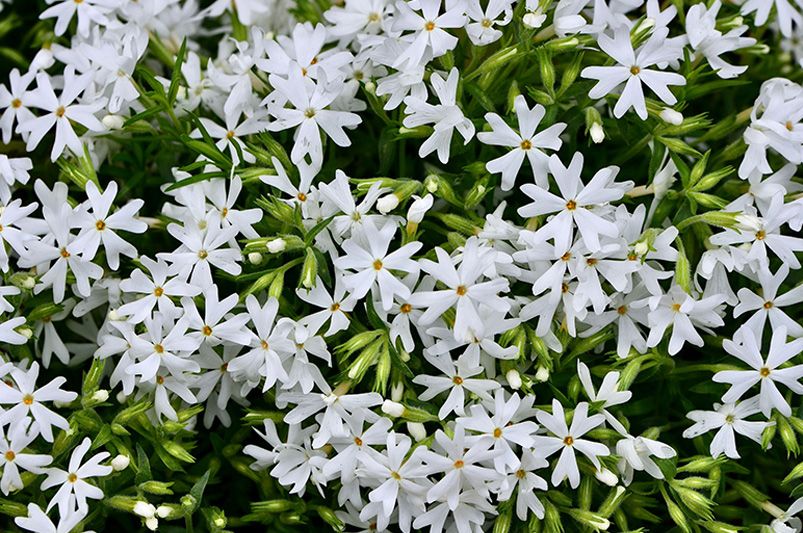
Snowflake Creeping Phlox
Snowflake Creeping Phlox is a plant species that brings bright ground cover and strong, tubular flowers. These flowers help keep out invasive species. This plant can add balanced beauty to gardens, especially for those worried about invasive plant species that may do harm.
-
The plant has pure white, tubular flowers. They bloom from spring to summer.
-
It gives your soil protection from erosion. It can help slopes and moist spots stay firm.
-
Snowflake Creeping Phlox grows well in both sunny and shaded areas of homes in Virginia.
Because it spreads out, the plant is good at covering spaces and helps stop habitat loss. It can grow near other plants that stop invaders, and it works well with many neighbor plants. Garden designers in Virginia like to use Snowflake Creeping Phlox because of how well it fits in different types of soil.
Snowflake Creeping Phlox stands out when compared to invasive plant species like butterfly bush. It helps create beautiful gardens and also supports nature. You will see tough, bright blooming with this plant, and it lets gardeners make small, easy changes to where it grows. This makes it a good pick for those who want to shape the look of their Virginia gardens.
Native Grasses and Their Ecological Benefits
Virginia’s native grasses give many great benefits to anyone working on a conservation project. Muhly Grass brings a lovely glow to gardens and helps many animals. Birds and mammals rely on it for food sources in parts of the state. This grass looks elegant, but it is strong and can stop the ground from washing away.
Switchgrass is useful when the soil needs protection, especially in places where runoff and wet spots can be a problem. Many people in the Southern Piedmont like how this grass changes when the light changes. It can grow into nice green borders that help many kinds of life thrive in their native surroundings.
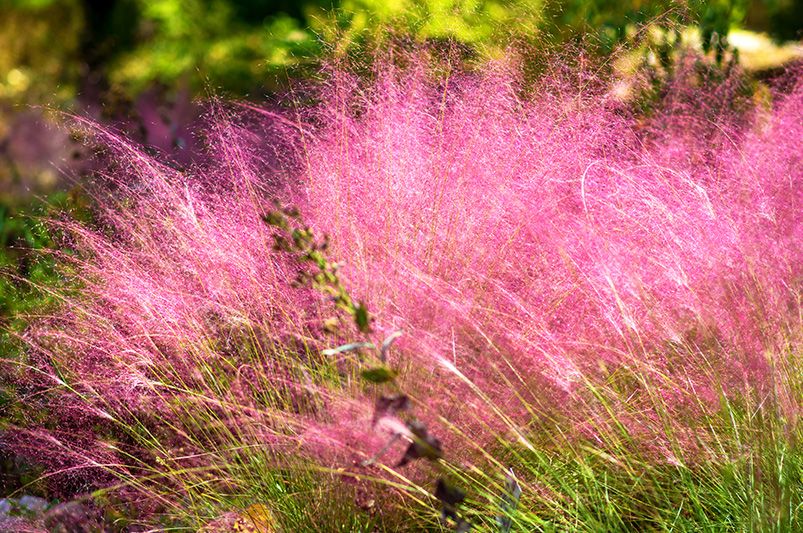
Muhly Grass
Muhly Grass is a top choice for many who want to add grass to landscapes in Virginia. The grass grows in a way that helps wildlife by giving them places to live and food to eat. This is very important when there is less natural food, like during changes between seasons. It also helps to make up for the homes lost to plants like butterfly bush, a type of invasive species. By planting more Muhly Grass, people try to bring back Virginia’s special mix of animals and plants.
You can see Muhly Grass in different open spaces, from the southern Piedmont to places as far as Eurasia. This grass is a good choice to grow with native flowers, such as eutrochium fistulosum. When they grow together, they create safe areas for animals and plants. Muhly Grass fits well with efforts to protect the land and supports year-round landscapes, which makes different conservation plans easier to keep up.
Muhly Grass grows well in damp areas, and it can make a landscape look light and soft, even in managed yards. In the southern Piedmont, these lines of grass offer simple planting that is easy to keep up with in humid spaces. It gives good results without the problems that you might get from using other plants as substitutes. Muhly Grass is a clear, helpful choice for yards in this area.
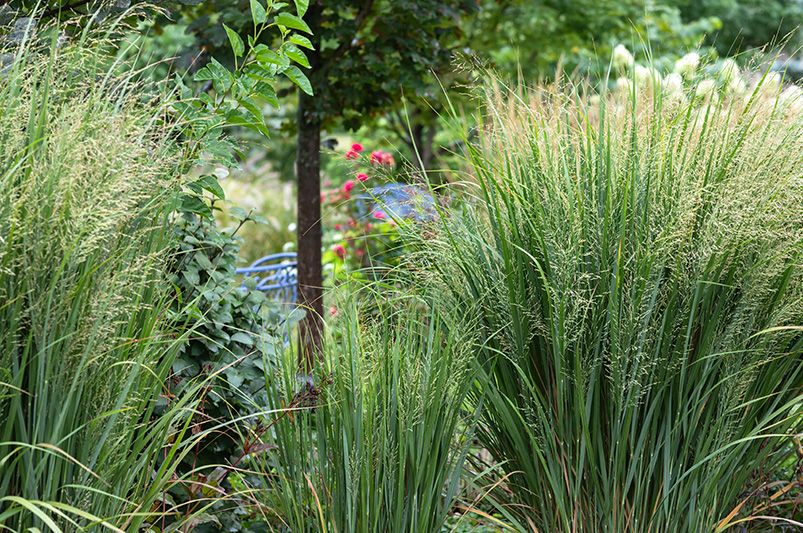
Switchgrass
Switchgrass grows well in many places across the Commonwealth of Virginia. This native species stands out because it is strong and easy to grow. It is a good pick for gardens, as it helps stop soil erosion and gives a home to native wildlife. This plant also looks good and can grow in several types of soil and moisture. That is one reason many people like to use it in their gardens. Switchgrass has thick green leaves, and these turn gold in late summer. It brings more wildlife to an area and helps support a range of life, like the monarch butterfly. This makes it a great plant to have in any landscape.
Conclusion
Making thoughtful decisions about the plants that grow well in Virginia can help your garden look better and also help the local environment. When you choose native species like butterfly weed and bee balm, you give wildlife a place to live and help slow down soil erosion. Adding different kinds of flowering plants that bloom at different times gives food to pollinators such as the monarch butterfly all year long. Using the special plants found in the state helps you make a colorful and strong garden that celebrates Virginia’s natural roots.
Frequently Asked Questions
What is the Best Time to Plant in Virginia?
In Virginia, when you plant depends on the type of plant you have. Most plants do best if you plant them in early spring or in the fall. If you want to grow warm-season grasses, like switchgrass, plant them in late spring. You should wait until after the last frost for best results. This will help them grow the most.
What are the climate characteristics of Virginia that affect plant growth?
Virginia’s climate has both humid and mild areas. There is steady rain through the year and the weather changes with each season. These things play a big part in how plants grow. The time when frost happens, how much water is in the soil, and changes in the air warmth all matter. Because of this, people need to choose plants that will do well in their local area.
Ready to transform your Virginia yard with a custom landscape design?
ShrubHub’s expert team specializes in creating stunning 3D landscape designs tailored to Virginia’s unique climate and terrain. Whether you’re envisioning a charming cottage garden, a modern outdoor living space, or a low-maintenance yard that thrives year-round, we’ll bring your vision to life with creativity and precision. Start your design journey today and see how ShrubHub can turn your Virginia yard into a beautiful, functional retreat.


